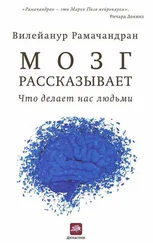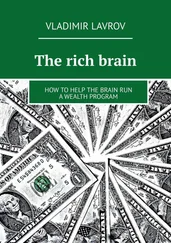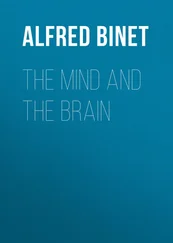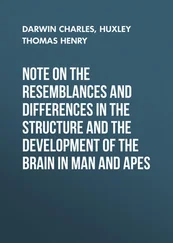As Tom left my office one day, I couldn’t resist asking him an obvious question. During the last four weeks, had he ever noticed any of these peculiar referred sensations in his phantom hand when his face had been touched — when he shaved every morning, for example?
“No, I haven’t”, he replied, “but you know, my phantom hand sometimes itches like crazy and I never know what to do about it. But now”, he said, tapping his cheek and winking at me, “I know exactly where to scratch!”
CHAPTER 3
Chasing the Phantom
You never identify yourself with the shadow cast by your body, or with its reflection, or with the body you see in a dream or in your imagination. Therefore you should not identify yourself with this living body, either.
—Shankara (a.D. 788-820), Viveka Chudamani (Vedic scriptures)
When a reporter asked the famous biologist J.B.S. Haldane what his biological studies had taught him about God, Haldane replied, “The creator, if he exists, must have an inordinate fondness for beetles”, since there are more species of beetles than any other group of living creatures. By the same token, a neurologist might conclude that God is a cartographer. He must have an inordinate fondness for maps, for everywhere you look in the brain maps abound. For example, there are over thirty different maps concerned with vision alone.
Likewise for tactile or somatic sensations — touch, joint and muscle sense — there are several maps, including, as we saw in the previous chapter, the famous Penfield homunculus, a map draped across a vertical strip of cortex on the sides of the brain. These maps are largely stable throughout life, thus helping ensure that perception is usually accurate and reliable. But, as we have seen, they are also being constantly updated and refined in response to vagaries of sensory input. Recall that when Tom’s arm was amputated, the large patch of cortex corresponding to his missing hand was “taken over” by sensory input from his face. If I touch Tom’s face, the sensory message now goes to two areas — the original face area (as it should) but also the original “hand area”. Such brain map alterations may help explain the appearance of Tom’s phantom limb soon after amputation. Every time he smiles or experiences some spontaneous activity of facial nerves, the activity stimulates his “hand area”, thereby fooling him into thinking that his hand is still there.
But this cannot be the whole story. First, it doesn’t explain why so many people with phantoms claim that they can move their “imaginary” limbs voluntarily. What is the source of this illusion of movement? Second, it doesn’t explain the fact that these patients sometimes experience intense agony in the missing limb, the phenomenon called phantom pain. Third, what about a person who is born without an arm? Does remapping also occur in his brain, or does the hand area of the cortex simply never develop because he never had an arm?
Would he experience a phantom? Can someone be born with phantom limbs?
The idea seems preposterous, but if there’s one thing I’ve learned over the years it’s that neurology is full of surprises. A few months after our first report on phantoms had been published, I met Mirabelle Kumar, a twenty-five-year-old Indian graduate student, referred to me by Dr. Sathyajit Sen, who knew about my interest in phantoms. Mirabelle was born without arms. All she had were two short stumps dangling from her shoulders. X rays revealed that these stumps contained the head of the humerus or upper arm bone, but that there were no signs of a radius or ulna. Even the tiny bones of her hands were missing, although she did have a hint of rudimentary fingernails in the stump.
Mirabelle walked into my office on a hot summer day, her face flushed from walking up three flights of stairs.
An attractive, cheerful young lady, she was also extremely direct with a “don’t pity me” attitude writ large on her face.
As soon as Mirabelle was seated, I began asking simple questions: where she was from, where she went to school, what she was interested in and so forth. She quickly lost patience and said, “Look, what do you really want to know? You want to know if I have phantom limbs, right? Let’s cut the crap.”
I said, “Well, yes, as a matter of fact, we do experiments on phantom limbs. We’re interested in...”
She interrupted. “Yes. Absolutely. I’ve never had arms. All I’ve ever had are these.” Deftly, using her chin to help her in a practiced move, she took off her prosthetic arms, clattered them onto my desk and held up her stumps. “And yet I’ve always experienced the most vivid phantom limbs, from as far back in my childhood as I can remember.”
I was skeptical. Could it be that Mirabelle was just engaging in wishful thinking? Maybe she had a deep-seated desire to conform, to be normal. I was beginning to sound like Freud. How could I be sure she was not making it up?
I asked her, “How do you know that you have phantom limbs?”
“Well, because as I’m talking to you, they are gesticulating. They point to objects when I point to things, just like your arms and hands.”
I leaned forward, captivated.
“Another interesting thing about them, doctor, is that they’re not as long as they should be. They’re about six to eight inches too short.”
“How do you know that?”
“Because when I put on my artificial arms, my phantoms are much shorter than they should be”, said Mirabelle, looking me squarely in the eye. “My phantom fingers should fit into the artificial fingers, like a glove, but my arm is about six inches too short. I find this incredibly frustrating because it doesn’t feel natural. I usually end up asking the prosthetist to reduce the length of my artificial arms, but he says that would look short and funny. So we compromise. He gives me limbs that are shorter than most but not so absurdly short that they look strange.” She pointed to one of her prosthetic arms lying on the desk, so I could see. “They’re a little bit shorter than normal arms, but most people don’t notice it.”
To me this was proof that Mirabelle’s phantoms were not wishful thinking. If she wanted to be like other people, why would she want shorter-than-normal arms? There must be something going on inside her brain that was giving rise to the vivid phantom experience.
Mirabelle had another point. “When I walk, doctor, my phantom arms don’t swing like normal arms, like your arms. They stay frozen on the side, like this.” She stood up, letting her stumps drop straight down on both sides. “But when I talk”, she said, “my phantoms gesticulate. In fact, they’re moving now as I speak”.
This is not as mysterious as it sounds. The brain region responsible for smooth, coordinated swinging of the arms when we walk is quite different from the one that controls gesturing. Perhaps the neural circuitry for arm swinging cannot survive very long without continuous nurturing feedback from the limbs. It simply drops out or fails to develop when the arms are missing. But the neural circuitry for gesticulation — activated during spoken language — might be specified by genes during development. (The relevant circuitry probably antedates spoken language.) Remarkably, the neural circuitry that generates these commands in Mirabelle’s brain seems to have survived intact, despite the fact that she has received no visual or kinesthetic feedback from those “arms” at any point in her life. Her body keeps telling her, “There are no arms, there are no arms”, yet she continues to experience gesticulation.
This suggests that the neural circuitry for Mirabelle’s body image must have been laid down at least partly by genes and is not strictly dependent on motor and tactile experience. Some early medical reports claim that patients with limbs missing from birth do not experience phantoms. What I saw in Mirabelle, however, implies that each of us has an internally hard-wired image of the body and limbs at birth — an image that can survive indefinitely, even in the face of contradictory information from the senses. 1
Читать дальше












